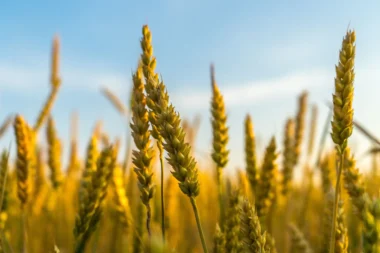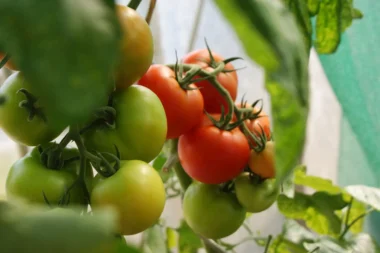Saffron, often referred to as “red gold,” is one of the world’s most valuable and sought-after spices, prized for its distinct flavor, aroma, and vibrant color. As climate change and agricultural challenges persist, the cultivation of saffron in controlled environments has garnered increasing attention for its potential to ensure year-round production, maximize resource efficiency, and maintain the high quality of this precious spice. This article delves into the latest research and advancements in cultivating saffron in controlled conditions, shedding light on the challenges faced, breakthroughs achieved, and the promising future of saffron farming.
1. Understanding Saffron:
Saffron (Crocus sativus) is a delicate perennial plant that thrives in specific climatic conditions. Traditionally grown in regions with a Mediterranean climate, the controlled environment provides an opportunity to expand saffron cultivation to areas with different climates.
2. Optimizing Growth Conditions:
Controlled environments offer precise control over key growth factors such as temperature, humidity, and light, providing an ideal setting for saffron cultivation. Researchers have been experimenting with various combinations to simulate the optimal conditions that encourage saffron corm (bulb) development and flowering.
3. Lighting Strategies:
The role of light is crucial in saffron cultivation, influencing flower initiation and development. Recent studies explore the use of LED lighting systems, allowing for customizable light spectra to mimic natural sunlight and enhance the growth and flowering phases of saffron.
4. Hydroponics and Substrate Alternatives:
Controlled environments enable experimentation with hydroponic systems and alternative substrates to traditional soil. Hydroponics offers precise nutrient control, potentially enhancing saffron yield and quality. Researchers are investigating the feasibility and benefits of substrate alternatives like coconut coir and perlite.
5. Temperature and Humidity Management:
Saffron has specific temperature and humidity requirements for optimal growth. Controlled environments allow for the fine-tuning of these factors, with advancements in climate control technologies ensuring that saffron plants thrive in conditions that closely mimic their native habitat.
6. Nutrient Management:
Saffron is a nutrient-demanding crop, and controlled environments facilitate the precise delivery of essential nutrients. Researchers are exploring nutrient formulations and delivery methods to optimize saffron yield and enhance the spice’s characteristic attributes.
7. Pest and Disease Management:
In controlled environments, the risk of pests and diseases can be mitigated through strict monitoring and preventive measures. Integrated pest management (IPM) strategies, including the use of beneficial insects and organic pesticides, are being researched to ensure saffron crops remain healthy.
8. Automation and Monitoring Systems:
The integration of automation and monitoring systems in controlled environments enhances operational efficiency. Real-time data on environmental conditions, nutrient levels, and plant health allow for timely interventions, optimizing saffron growth and minimizing resource wastage.
9. Economic Viability:
Assessing the economic viability of cultivating saffron in controlled conditions is a key consideration. Researchers are conducting cost-benefit analyses to determine the feasibility and sustainability of adopting controlled-environment methods on a commercial scale.
10. Sustainable Practices:
Sustainable practices in saffron cultivation are of paramount importance. Controlled environments provide an opportunity to explore sustainable farming methods, including water recycling, energy-efficient technologies, and waste reduction strategies.
The latest technologies and hardware driving the growth of saffron in controlled conditions, reveals how innovation is reshaping the landscape of this ancient spice’s cultivation.
1. LED Lighting Systems:
The use of advanced LED lighting systems stands out as a key technological innovation in controlled-environment saffron cultivation. Tailored light spectra, adjustable to mimic natural sunlight, contribute to optimal photosynthesis, flowering, and corm development. Smart LED systems, equipped with sensors, enable real-time adjustments based on environmental conditions, ensuring precise illumination throughout the saffron growth cycle.
2. Climate Control Chambers:
Cutting-edge climate control chambers provide an environment where temperature and humidity can be meticulously regulated. These chambers utilize sophisticated sensors and actuators, coupled with precise heating, ventilation, and air conditioning (HVAC) systems, to create conditions that closely emulate the native habitat of saffron. Such chambers offer the flexibility to experiment with various climate scenarios for optimal saffron growth.
3. Hydroponic and Aeroponic Systems:
The adoption of hydroponic and aeroponic systems marks a departure from traditional soil-based cultivation. These systems deliver nutrients directly to saffron plants, promoting efficient nutrient uptake and potentially enhancing yield. Hydroponics, in particular, is gaining traction for its water-efficient nature and precise control over nutrient levels, ensuring a more sustainable approach to saffron cultivation.
4. Automated Nutrient Delivery Systems:
Automated nutrient delivery systems, integrated with precision agriculture technologies, enable saffron growers to fine-tune nutrient formulations. These systems ensure a consistent and optimized supply of essential nutrients, addressing the specific demands of saffron plants at different growth stages. This level of precision contributes to the overall health and quality of the saffron crop.
5. Unmanned Aerial Vehicles (UAVs) for Monitoring:
UAVs equipped with advanced imaging technologies are being employed for aerial monitoring of saffron fields in controlled environments. These drones capture high-resolution images, allowing growers to assess plant health, identify potential issues, and make informed decisions for targeted interventions. UAVs contribute to efficient and timely crop management, enhancing overall saffron yield and quality.
6. IoT Sensors and Data Analytics:
The Internet of Things (IoT) is playing a pivotal role in saffron cultivation by integrating sensors throughout controlled environments. These sensors capture data on environmental conditions, soil moisture, and plant health. Coupled with data analytics, this information provides actionable insights, enabling growers to make data-driven decisions for optimized saffron production.
7. Automated Harvesting Technologies:
Robotics and automation technologies have been introduced to streamline the harvesting process in controlled-environment saffron cultivation. Automated harvesting mechanisms, guided by computer vision and robotic arms, delicately pluck saffron flowers at the precise time of maturity, ensuring minimal damage and maintaining the spice’s quality attributes.
8. Blockchain for Traceability:
Implementing blockchain technology for traceability is gaining prominence in the saffron industry. By recording every stage of saffron cultivation and production on a secure and transparent ledger, blockchain ensures the authenticity and origin of saffron, instilling confidence in consumers and facilitating adherence to quality standards.
In conclusion, the exploration of saffron growth in controlled environments, bolstered by cutting-edge technologies such as advanced LED lighting, climate control chambers, hydroponics, UAV monitoring, and blockchain traceability, signifies a transformative era for this precious spice. These innovations not only address traditional cultivation challenges but also promise sustainable practices, economic viability, and enhanced productivity. The marriage of precision agriculture with controlled environments enables saffron cultivation in diverse climates, ensuring consistent year-round production while maintaining the spice’s distinctive qualities. The integration of automated systems and data-driven approaches not only optimizes resource usage but also contributes to the preservation of saffron’s unparalleled flavor and color. As stakeholders collaborate to refine and expand these technologies, the future of saffron cultivation emerges as a harmonious convergence of tradition and technology, heralding a promising and sustainable path for this globally cherished spice.



